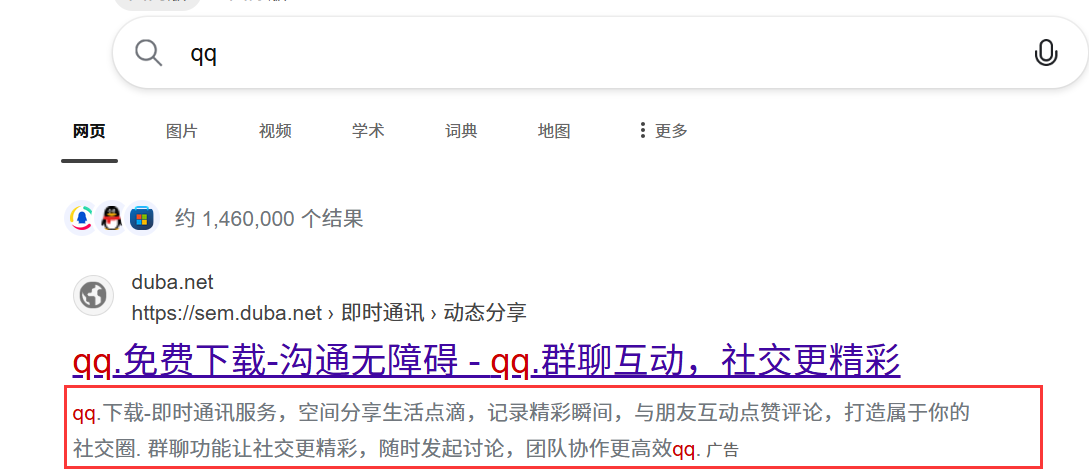前置内容
索引模块
一、整体框架
1.整体架构目标
- 功能定位:提供一个轻量级、可嵌入的本地搜索引擎后端模块。
- 输入:原始文档集合路径(用于建索引);用户查询字符串(用于搜索)。
- 输出:结构化 JSON 格式的搜索结果(含标题、摘要、URL、相关性权重等)
2.包含功能
①初始化模块
功能:创建索引
cpp
void InitSearcher(std::string &input)
{
//1.获取或创建index对象
//2.根据index对象创建索引
}②搜索模块
功能:主要模块,根据搜索词查找索引并返回包含搜索词的文档
cpp
void Search(std::string& query, std::string *json_string)
{}参数解释:query:用户搜索的词
json_string:返回给用户的搜索结果
二、初始化模块
1.单例模式
初始化创建index对象并根据index对象创建索引,因为创建索引只需要一次就够了,为防止多次创建对象浪费资源,所以index模块我们使用单例模式
cpp
Class index
{
private:
Index(){}
Index(const Index&) = delete;
Index& operator=(const Index&) = delete;
static Index* instance;
static std::mutex mutex;
public:
//获取单例
static Index* GetInstance()
{
if(nullptr == instance)//双层锁减少加锁,提高效率
{
mutex.lock();
if(nullptr == instance)
{
instance = new Index();
}
mutex.unlock();
}
return instance;
}
};
Index* Index::instance = nullptr;创建单例思路:通过使用双检锁机制确保在多线程环境下仅创建一个Index类的实例,并且该实例只能通过静态方法GetInstance访问。为避免频繁加锁带来的性能损耗,在首次检查确认实例未创建后才进行加锁操作,并在加锁后再做一次检查以防止多个线程同时创建实例的情况。此外,为了保证单例的有效性,删除了拷贝构造函数和赋值操作符,阻止了通过拷贝方式生成新的实例。实例化过程采用懒加载策略,即实例在第一次调用GetInstance方法时才会被创建,这样可以节省资源,特别适合初始化成本较高的场景。
2.初始化的构建
思路:首先根据单例创建索引对象,然后调用对象的构建索引的模块就完啦,太简单了
cpp
void InitSearcher(const std::string &input)
{
//1.获取或创建index对象
index = ns_index::Index::GetInstance();
std::cout << "获取单例成功" << std::endl;
//2.根据index对象创建索引
index->BuildIndex(input);
std::cout << "创建索引成功" << std::endl;
}不解释
三、搜索模块
1.思路
①分词:对我们的query进行按照searcher的要求进行分词
②触发:就是根据分词的各个"词",按照index进行查找
③合并排序:汇总查找,按照相关性(weight)降序排序
④构建:根据查找出来的结果,构建json串
2.分词
使用工具类Util中的CutString函数
cpp
std::vector<std::string> words;
Util::JiebaUtil::CutString(query, &words);3.触发
①功能:根据用户输入的一组分词(words),从倒排索引中查找每个词对应的文档列表(倒排拉链),并将所有结果合并到一个统一的列表 inverted_list_all 中
②思路
cpp
struct InvertElem
{
std::string word;
uint64_t doc_id;
int weight;//权重
};
//倒排拉链:存储所有文档中的同一个单词的InvertElem,里边记录这这个单词所处id和权重,方便根据权重展示
typedef std::vector<InvertElem> InvertList;- 创建一个空的倒排列表
inverted_list_all,用于收集所有匹配词项对应的文档ID及其相关信息 (如词频、位置等,取决于InvertList的定义)。 - 使用
boost::to_lower将其转换为小写,保证查询与索引时的大小写一致(通常索引构建时也会转小写,以实现大小写不敏感搜索)。 - 调用索引对象
index的GetInvertList(word)方法,尝试获取该词对应的倒排拉链(即包含该词的所有文档ID列表)。 - 如果返回
nullptr,说明该词不在索引中(例如是停用词或未被索引的词),则跳过该词。 - 将当前词的倒排拉链中的所有元素(文档记录)追加到
inverted_list_all的末尾。
cpp
ns_index::InvertList inverted_list_all;//根据单词找到id存入其中
for(auto word : words)
{
boost::to_lower(word);
//根据单词获取倒排拉链
ns_index::InvertList* inverted_list = index->GetInvertList(word);
if(nullptr == inverted_list)
{
continue;
}
inverted_list_all.insert(inverted_list_all.end(), inverted_list->begin(), inverted_list->end());
}执行完这一步后inverted_list_all里边存的是包含搜索词的InvertElem的集合
4.合并排序
功能:按照相关性进行降序排序
cpp
std::sort(inverted_list_all.begin(), inverted_list_all.end(),
[](const ns_index::InvertElem& e1, const ns_index::InvertElem& e2){
return e1.weight > e2.weight;//降序>, 升序<
});执行完这一步后inverted_list_all中就会按weight的顺序将InvertedElem进行降序
小技巧:编写仿函数时降序用>,升序用<
5.构建
①功能:根据查找出来的结果,构建json串
②Json的使用
请移步下边的文章
③思路
遍历inverted_list_all,根据其中元素的id值查找正排索引,就可以得到文档的全部内容,然后就能构建Json串了
cpp
Json::Value root;
for(auto &item : inverted_list_all)
{
ns_index::DocInfo* doc = index->GetForwordIndex(item.doc_id);
if(nullptr == doc)
{
continue;
}
Json::Value elem;
elem["title"] = doc->title;
elem["desc"] = GetDesc(doc->content, item.word);
// elem["desc"] = doc->content;//content是文档去标签后的结果,但不是我们想要的,我们要的是一部分
elem["url"] = doc->url;
elem["id"] = item.doc_id;
elem["weight"] = item.weight;
root.append(elem);
}
Json::StyledWriter writer;
*json_string = writer.write(root);④GetDesc的实现
功能:提取文档内容中的一部分,而不是全部展示出来
类似下图中框起来的部分,不设置的话就会将文档内容全部展示出来,不够清晰

思路:我们采用的是将搜索词的前50个字符和后100个字符显示出来作为概要
①找到首次出现的位置
②获取开始位置和结束位置
③返回字符串
cpp
std::string GetDesc(std::string& content, std::string& word)
{
//找到word在content中首次出现的位置,然后往前找50个字节(不够从头开始),往后找100个字节(不够到结尾)
const int prev_step = 50;
const int next_step = 100;
//1.找到首次出现
auto iter = std::search(content.begin(), content.end(),word.begin(),word.end(),
[](int x, int y){
return (std::tolower(x) == std::tolower(y));
});
if(iter == content.end()){
return "None";
}
std::size_t pos = std::distance(content.begin(),iter);
//下边这种写法有坑:读取的是文档中的内容,例如:文档中Split,而word是split,无法区分大小写
// std::size_t pos = content.find(word);
// if(pos == std::string::npos)
// return "None";
//2.获取开始和结束位置
std::size_t start = 0;
std::size_t end = content.size();
if(pos > start + prev_step) start = pos-prev_step;
if(pos + next_step < end) end = pos+next_step;
//3.返回字串
if(start >= end) return "None1";
return content.substr(start, end-start);
}四、代码展示
cpp
#pragma once
#include "index.hpp"
#include <jsoncpp/json/json.h>
namespace ns_searcher
{
class Searcher
{
private:
ns_index::Index* index;//供系统进行查找索引
public:
void InitSearcher(const std::string &input)
{
//1.获取或创建index对象
index = ns_index::Index::GetInstance();
std::cout << "获取单例成功" << std::endl;
//2.根据index对象创建索引
index->BuildIndex(input);
std::cout << "创建索引成功" << std::endl;
}
//query:搜索的词
//json_string:返回给用户的搜索结果
void Search(std::string &query, std::string *json_string)
{
//1.分词:对我们的query进行按照searcher的要求进行分词
std::vector<std::string> words;
Util::JiebaUtil::CutString(query, &words);
//2.触发:就是根据分词的各个"词",按照index查找
ns_index::InvertList inverted_list_all;//根据单词找到id存入其中
for(auto word : words)
{
boost::to_lower(word);
//根据单词获取倒排拉链
ns_index::InvertList* inverted_list = index->GetInvertList(word);
if(nullptr == inverted_list)
{
continue;
}
inverted_list_all.insert(inverted_list_all.end(), inverted_list->begin(), inverted_list->end());
}
//3.合并排序:汇总查找结果,按照相关性(weight)降序排序
std::sort(inverted_list_all.begin(), inverted_list_all.end(),
[](const ns_index::InvertElem& e1, const ns_index::InvertElem& e2){
return e1.weight > e2.weight;//降序>, 升序<
});
//4.构建:根据查找出来的结果,构建json串
Json::Value root;
for(auto &item : inverted_list_all)
{
ns_index::DocInfo* doc = index->GetForwordIndex(item.doc_id);
if(nullptr == doc)
{
continue;
}
Json::Value elem;
elem["title"] = doc->title;
elem["desc"] = GetDesc(doc->content, item.word);
// elem["desc"] = doc->content;//content是文档去标签后的结果,但不是我们想要的,我们要的是一部分,稍后处理
elem["url"] = doc->url;
elem["id"] = item.doc_id;
elem["weight"] = item.weight;
root.append(elem);
}
Json::StyledWriter writer;
*json_string = writer.write(root);
}
std::string GetDesc(std::string& content, std::string& word)
{
//找到word在content中首次出现的位置,然后往前找50个字节(不够从头开始),往后找100个字节(不够到结尾)
const int prev_step = 50;
const int next_step = 100;
//1.找到首次出现
auto iter = std::search(content.begin(), content.end(),word.begin(),word.end(),
[](int x, int y){
return (std::tolower(x) == std::tolower(y));
});
if(iter == content.end()){
return "None";
}
std::size_t pos = std::distance(content.begin(),iter);
//下边这种写法有坑:读取的是文档中的内容,例如:文档中Split,而word是split,无法区分大小写
// std::size_t pos = content.find(word);
// if(pos == std::string::npos)
// return "None";
//2.获取开始和结束位置
std::size_t start = 0;
std::size_t end = content.size();
if(pos > start + prev_step) start = pos-prev_step;
if(pos + next_step < end) end = pos+next_step;
//3.返回字串
if(start >= end) return "None1";
return content.substr(start, end-start);
}
};
}